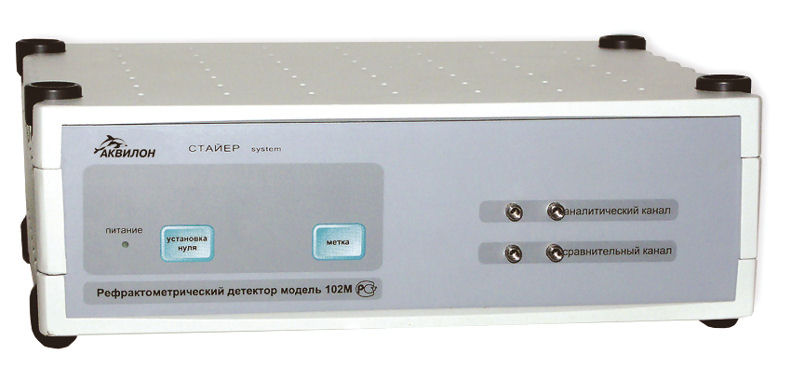The Model 102M detector is widely used for analyzing the carbohydrate content in food and beverages. In addition, it can be successfully used to study the composition of petroleum products (ultimate hydrocarbons) and other substances that do not fluoresce or absorb light.
Main Features
- Optimal solution to the problem of carbohydrate analysis
- Quick access to the mode
| Light source | LED |
| Light source wavelength | 650 nm |
| Analytical cuvette volume | 8 µl |
| Dynamic range Δn (Δn is the difference of refractive indices in the working cell and in the reference cell) | 1·10-7 - 5·10-2 O. E. R. |
| Operating range of refractive index (n) | 1.00-1.81 O. E. R. |
| Detection limit (for glucose) | < 1·10-5g |
| Noise without flow in distilled water (at a time constant of 2 seconds) | 1·10-8 O. E. R. |
| Level of zero signal fluctuation noise in the distilled water flow (at a time constant of 2 s) | 4·10-6 O. E. R. |
| Zero signal drift on distilled water flow | 5·10-4 O. E. R./h |
| Liquid path material | PTFE, SS316, quartz glass |
| Inlet and outlet fittings | ferrule internal thread 10-32 |
| Time to enter operating mode | 10 mins |
| Power supply, voltage/frequency | 220V/50Hz or 110V/60Hz |
| Power consumption, max | 16 VA |
| Overall dimensions (height, width, depth) | 120x330x290 mm |
| Weight | 10 kg |
Δn is the relative unit of refraction (O. E. R.)


